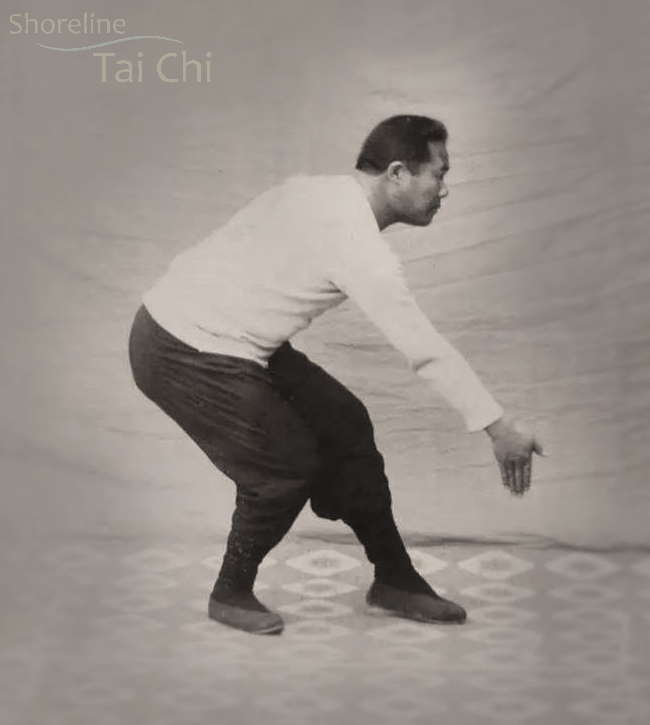From the November 2018 edition of our free Tai Chi newsletter.
Yang style Tai Chi does not require a ten-minute warmup sequence. The traditional form itself is structured as a gentle progression.
In the first section, we mostly perform small turns, straight steps and slow lunges.
Moving into the second section, we add larger turns (e.g. Embrace Tiger, Fist Under Elbow), forward bends and a few kicks.
The deepest stances, widest turns and highest kicks are all in the final third of the form; and by that time, we have already been moving around for ten minutes. We are already warmed up.
This is no coincidence. Yang style Tai Chi is intelligently designed.
Nevertheless, I prefer to start our classes with a “warmup” sequence. These warmups are an opportunity to target specific areas of the body in relative isolation. To ensure that we are able to move these joints individually, and then as subsystems and in short chains.
It makes sense to start here, I think. With the simplest possible steps. Before we attempt to…well, you know. Move all 600 skeletal muscles in a continuous and complementary fashion, adhering to an elaborate twenty-minute choreography from the Qing Dynasty. 😵
I like to explore moderately difficult warmups with clear relevance to Tai Chi. If you can comfortably enter a full squat, for example, then you will be in great physical shape to learn Left Wardoff. If you can touch your toes, it means you can probably move into the Rollback posture without discomfort. And so forth.
Performing a full squat (hip below knee) is not, strictly speaking, a requirement for learning Tai Chi. However it will definitely make the overall process easier! So I encourage you to spend a few minutes every week reaching towards that goal.
Here is a simple tutorial for improving your ankle flexibility. (And here is a more nuanced discussion of squat challenges, if you prefer that sort of thing.)
—
Chris Marshall
Head Instructor
Shoreline Tai Chi
